Because of their flocking habits and unpredictable nomadic movements Cedar Waxwings have always been elusive for me. My best luck with them has always been in Montana and each of these shots was taken in the Centennial Valley in the southwest part of that state.
1/2000, f/6.3, ISO 500, 500 f/4, 1.4 tc, natural light
Typically I find them at the tops of conifers when they’re not quite as close as I’d like for quality images. Waxwings are notorious for not showing much detail in their very smooth plumage but side light tends to bring out the fine shadows of the feathers and allow us to see more detail. This pose shows the red, waxy growths on the tips of the secondaries that waxwings are named for.
Until recently this was about the best I had done with the species but a few weeks ago a brief encounter with a single bird changed my luck for the better.
1/60, f/29, ISO 500, 100-400 @ 320mm, natural light
I had been photographing other birds along a dirt road when this waxwing popped up out of nowhere and landed on a berry bush very close to me. It was so close that I had to quickly grab my other camera with a zoom lens attached and in the excitement I inadvertently moved the mode dial on the camera from aperture priority to shutter priority – thus the wonky settings and slow shutter speed.
You’ll notice that the bird had a feather askew on the right side of its lower neck in a place that I imagine would be difficult to reach while preening. The waxwing spent a few moments gauging the potential of danger from my pickup which was very close to the berries it was after…
1/1250, f/6.3, ISO 500, 100-400 @ 300mm, natural light
and then apparently decided that the berry reward was worth the risk and went for the gusto. There were many berries right beneath its feet but for some reason it had its eye on one further away that it had to reach for.
1/1000, f/6.3, ISO 500, 100-400 @ 300mm, natural light
It quickly reached out and plucked the berry and held it in its beak for a few seconds. In this image the berry is in shade…
1/1250, f/6.3, ISO 500, 100-400 @ 300mm, natural light
but I did get a couple of images with it in better light.
1/1000, f/6.3, ISO 500, 100-400 @ 300mm, natural light
The bird swallowed the berry, gave me one last glance and then took off.
This berry bush is a type of invasive honeysuckle (thanks to Betsy Livingstone for the ID on a previous post) that has become common in many areas. Cedar Waxwings normally have yellow-tipped tails (very apparent in the third image down) but when these birds eat honeysuckle berries as their feathers are forming during a molt those yellow tips grow in orange – another interesting and unexpected consequence of an invasive species. This bird showed no orange in its retrices.
Ron


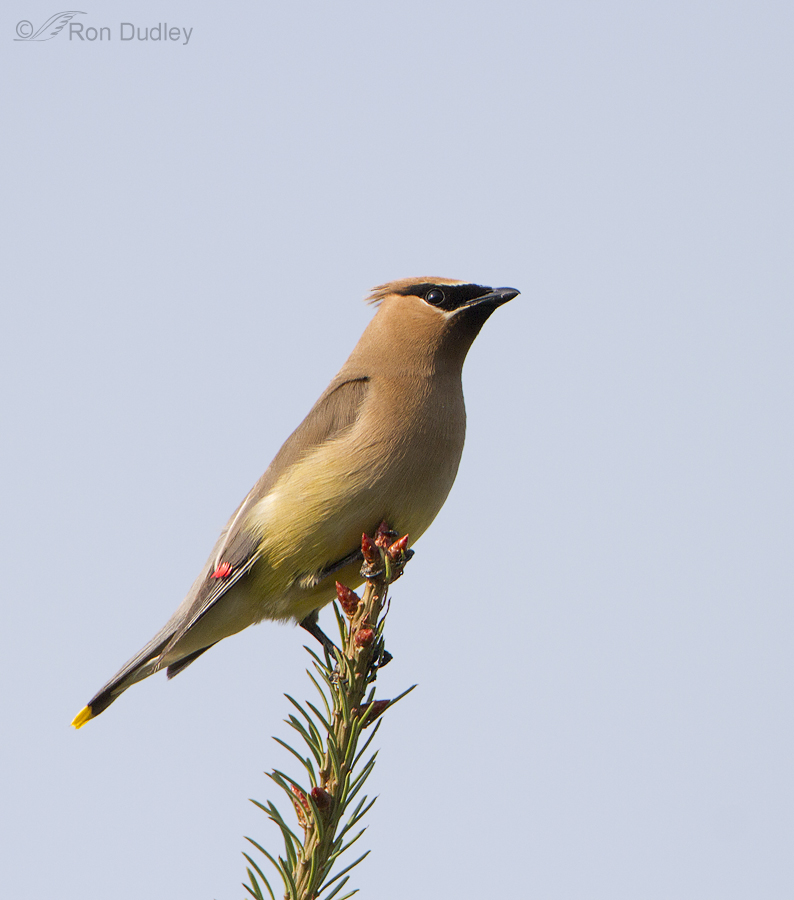
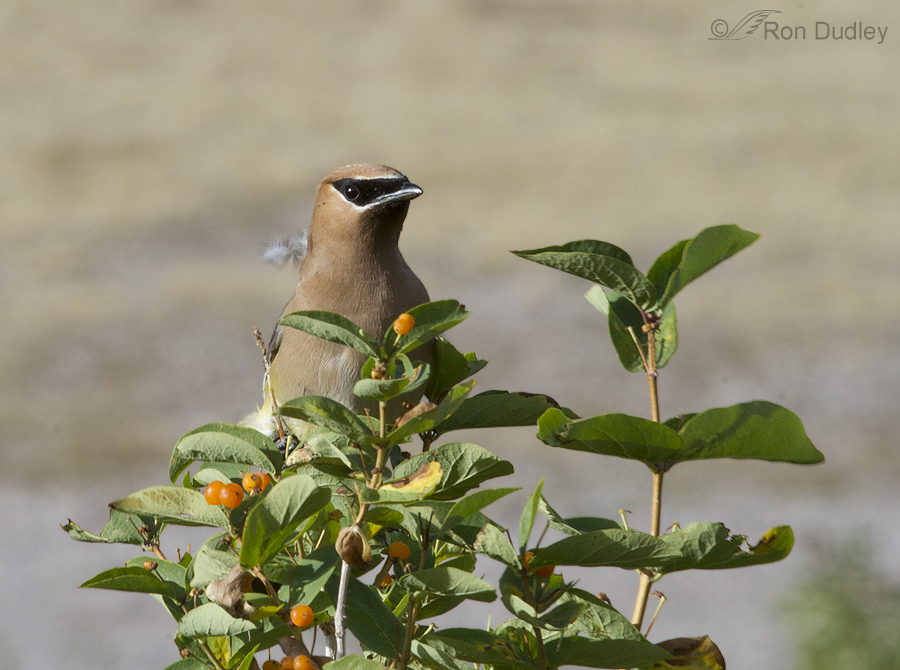
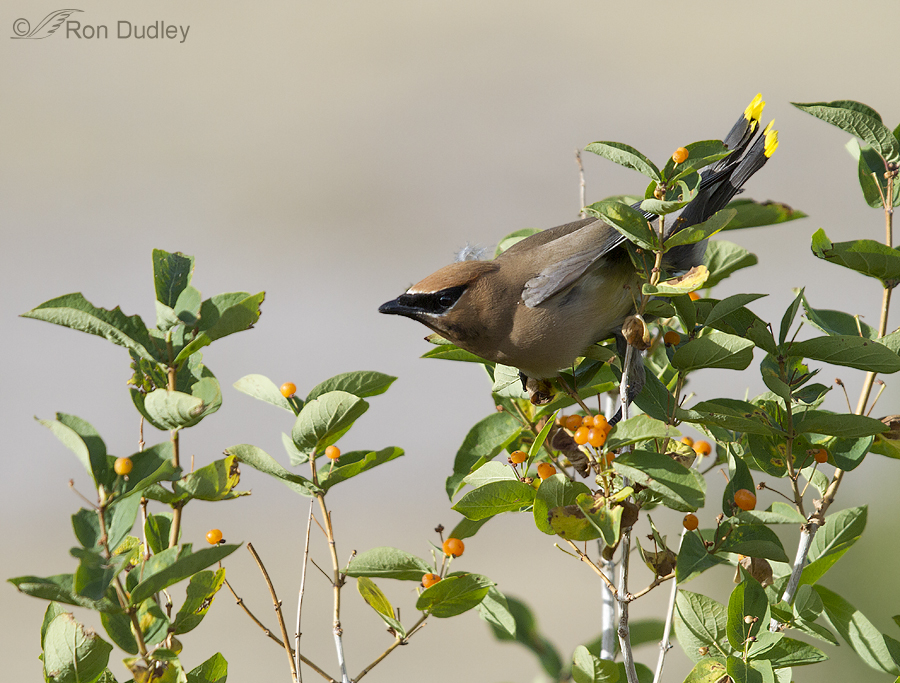
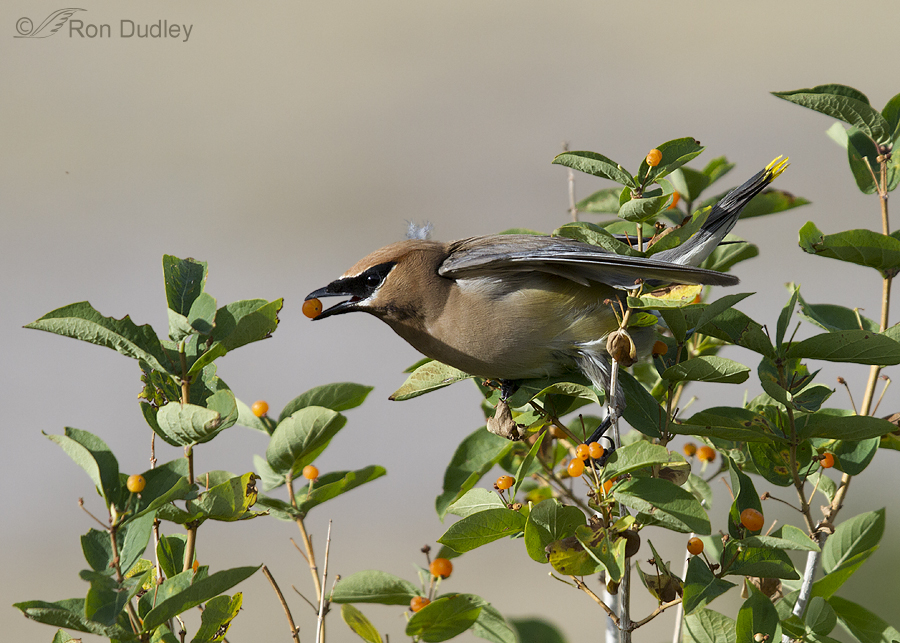
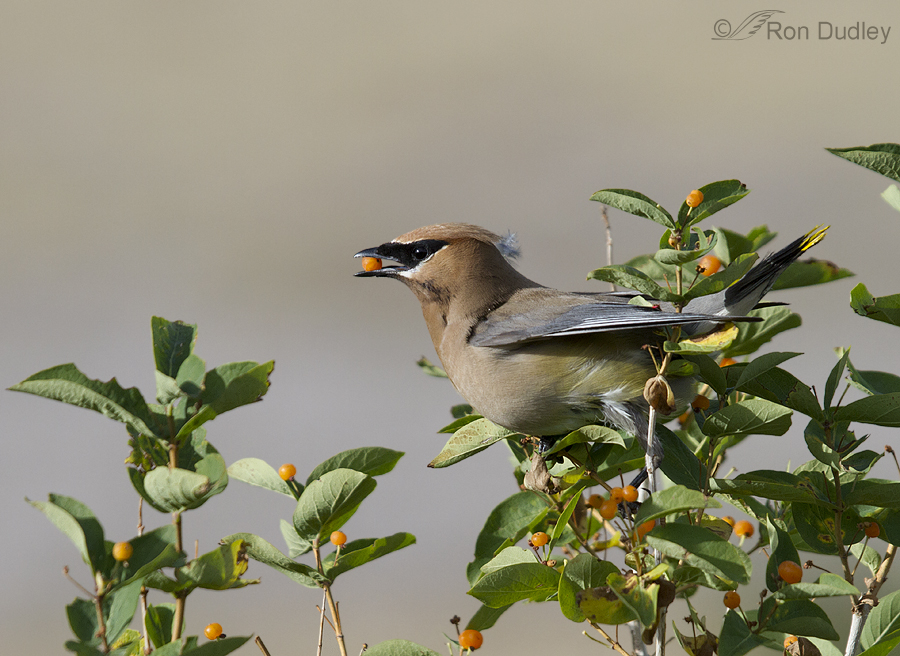
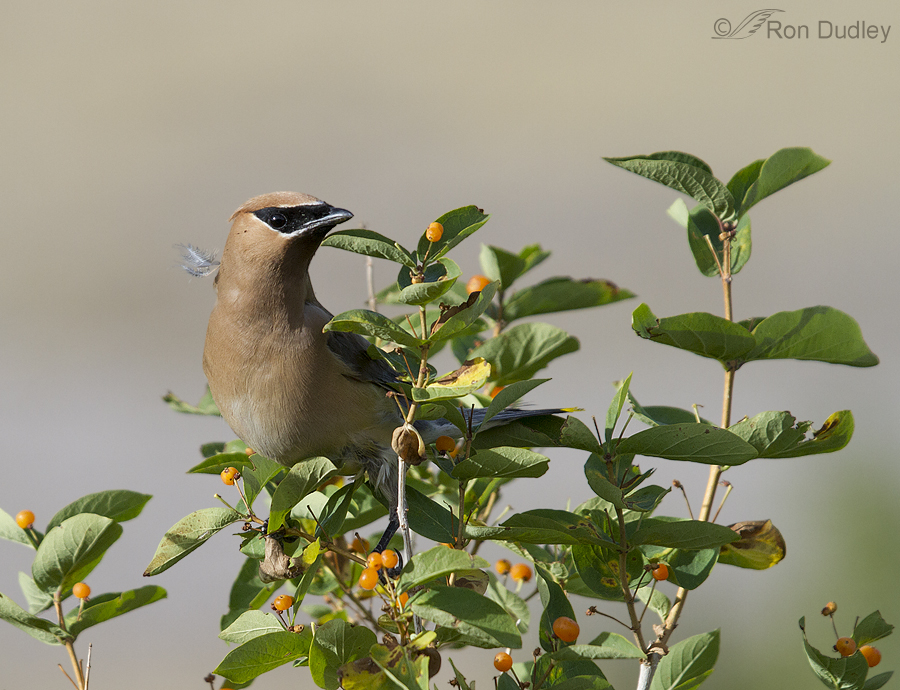
Love it, thank you.
Great pics of an amazing species. I am fortunate to live next to a river where they are abundant. I hear them all the time but don’t often get a good look even with binocs. Thanks for sharing
These are beautiful birds, your pics are outstanding. I love to hear them in the trees, peee peee peee……
As ever, these are stunning shots of one of my favorite birds. I haven’t been lucky enough to see any this year, thanks for sharing! Your shots are better than seeing them anyway!
Charlotte
We don’t have that type of bird here. They are so pretty. Great photos!
Ron:
I don’t see Cedar Waxwings very often either. I call them ceramic birds because of the difficulty in bringing out detail – the problem you mention. But you have done a wonderful job in this series while also getting the berry in the beak too! Another great change of pace.
Dave
They are an attractive bird, and it’s interesting to know about their feathers and photography. I guess birds are like us – decide something is what they want, and have to have it! Another really interesting post.
Another masked bandit! What an incredible series. The berry in the beak reminded me (strongly) of a Wattle Bird I found scoffing our mulberries. The berry was obviously more than enough incentive to keep it where it was. People/berries? Berries rule.
Once again absolutley perfect photographs. I keep practicing with my Nikon D800. But I seem to not be able to get the clarity you get. I’ll keep trying. Of course I do alot of shooting thru my dining room window!!! Thanks again Ron. Just perfect photos of a beatuiful bird.
Ellen
Your windows must be cleaner than mine, Ellen. I just wish I had these birds in my yard more often – it’s very rare for me to see them there.
Fantastic photographs of the Waxwings, Ron! We only see them during migration and I usually show up a day late to an area where they’ve been reported. One day………
Thank you, Wally. I hope you get your waxwing images one day soon.
Love the beautiful background and the crisp, clear bird and bush. These guys are voracious eaters and they’re so much smaller than they look in photographs. I’ve stood with my camera and tripod just feet away as they stripped a crabapple tree of fruit. In fact, they occasionally look like waxed fruit themselves. Wonderful camera work, as always!
Thank you, Kelly.
Nice shots Ron! My next door neighbor has a mountain ash tree as well as a bunch of choke cherries and every year we get about 5 to 7oo waxwings around December that come & strip those trees. I thought that was impressive. Then about 4 years ago literally 3000 birds showed up!!! I got a short video of it on my camera. It was one of the most incredible things I have ever seen. You walked out our back door & their noise was deafening & every tree & bush & branch & twig & wire around our & the 3 other neighbors were absolutely loaded with waxwings. I’ll probably never see anything like it again. It was just that one year!
Wow, Deb – 3000 waxwings! Incredible!!!
Hi Ron, Can’t recall how we heard about your blog but it is s highlight of both of ours daily! We’ve told a number of our fellow bird-loving customers about your blog when we speak to them about bird photography, so some have maybe found you also. (We own Wild Birds Unlimited in Eugene, OR.)
But, much as I love all of your work, we also enjoy the Waxwings: we’re fortunate to have another invasive species, Portuguese Laurel, growing in our back yard on our sloped terrace, and the waxwings know, to the day, exactly when those berries are ripe! They are in the neighborhood audibly for a week or so before they decide these are ready, then they come down to feast! Dan has gotten a number of good photos of them right from our dining room window, since the berries are at 2nd floor height which is also where our main living area is due to our sloped yard and the house’s siting.
One year, a group of youngsters were here feasting and one got a tad tipsy on the ripe berries and bumped into our sliding patio door. I immediately went out to see if it was okay. It was—only stunned—so I held it in my hands, thinking it would soon leave and fly off. But, no, it decided that my hand was a nice spot and it stayed in my loosely held hand for nearly ten minutes. My daughter, who was vising that day, got my camera and proceeded to get many photos of the bird, some quite close as it seemed merely curious and not the least bit alarmed at our presence. So, if you make it to Oregon in August, look us up and come see if the waxwings think our laurel berries are ripe!
Welcome, Barbara and Dan. Sounds like you have the ideal situation for waxwings. I’m jealous. I’ve only seen a few of them in my yard over the last 7 years or so but they’re often reported elsewhere in the valley. A “tipsy waxwing” – that must have been a very interesting experience!